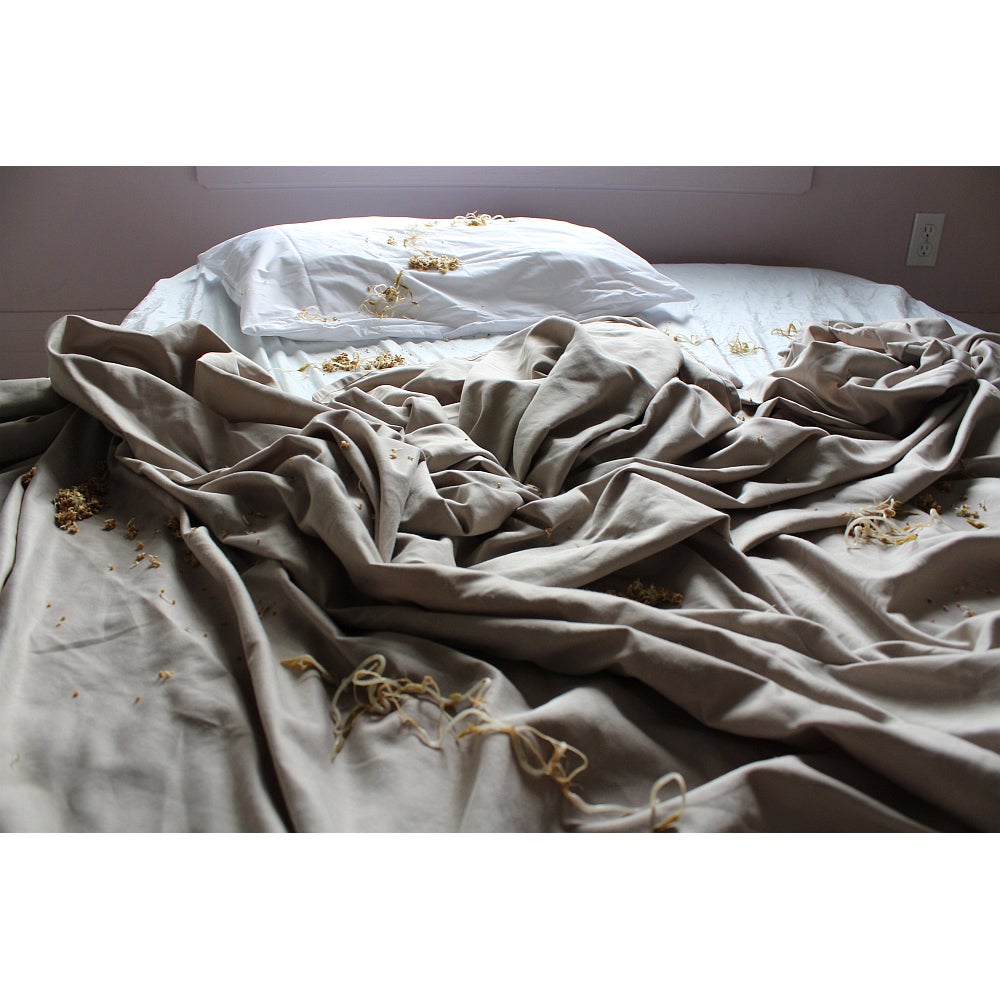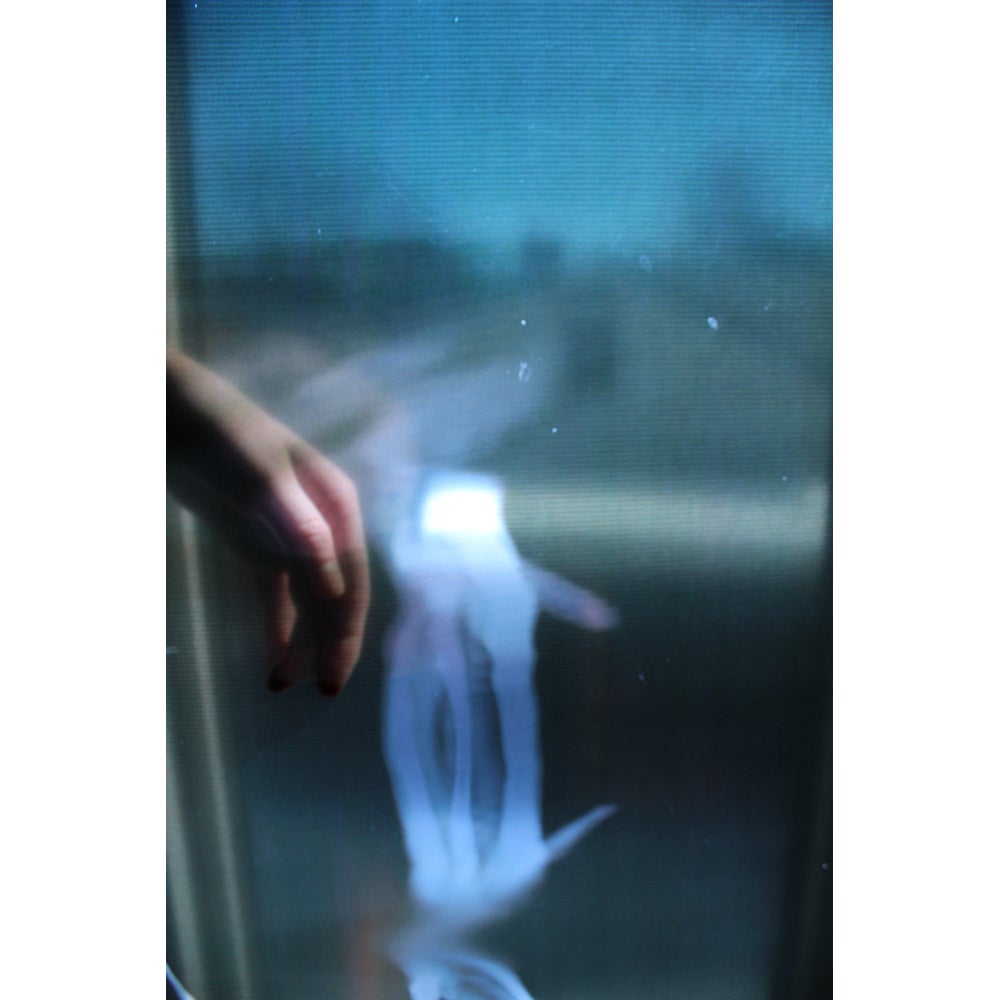
Email: klshort@uwaterloo.ca
Instagram: @kate_short_art / @aft.schoolsnack.co. (an artists’ collective)
Kate Short combines print, photography, painting, drawing, and sewing to create immersive installations and intimate photographs that reflect material sensibilities and personal growth discovered through her connections to people, plants, and animals. Recently this has taken shape as Kate dresses her indoor plants in handmade clothing, and builds her plants supportive devices out of forks and chopsticks. She creates cyanotype prints, turmeric anthotypes, and computer printer scans that capture impressions of her body, her front yard’s plant life, and sprouts she grows in her bedroom. Kate Short is a student at the University of Waterloo, and is based in Kitchener Waterloo. She lives with four friends and their house cat Skylar.
Artist Statement
I have been growing sprouts in my bedroom for three months now. I drag the sprouts in a dance across my computer printer scanner to create black and white images of their shapes, which get distorted in the process. I printed two of these scans on backlit and transparent film to use in a series of installation studies I call Bedroom Cohabitation Series. These studies allow me to play with the strategic and intuitive process of installation while working through concepts of care, and growth. What happens when we care too much, or too little? When I overgrow sprouts to the point where they become long curling strings or meaty bulbs that I pack into jars with vinegar for preservation? What happens when I scatter these wet sprouts across my bed and lay in the wet alongside them? When I pull the sprouts I have grown out of the plastic dish I rinse them in, they cling together—holding each other’s hands. I slowly pull them apart for my use. I am thinking about the ethics of this action when I perform it. My cohabitation with plants in this isolating moment in time has me thinking through what happens when the nature of my care changes, for my body and the living things around me.
Interview
How have your lived experiences informed your artistic practice?
My relationship with my health and body, in terms of food and consumption, growth and rest, and my process of working through how I can care for and listen to others (how to truly do this—and how to do this better), all inform my practise.
Because of health issues I have been experiencing this past year, I have been thinking of myself as a plant: I grow sprouts and water them twice daily, I give them sun, and I observe them for what they need – I have been observing my body with this same mix of mistakes, care, and attention, and through the process of these acts, observations, poetry, and photographs that I document alongside them, I am learning to cultivate care.
Who are your greatest influences? What effect do they have on your thesis work?
Our professor Lois Andison recently introduced me to Anicka Yi’s work, which I find fascinating!
Yi creates large scale installations, where she uses materials like bacteria, algae, and mushrooms to create works that focus on the power of scent and olfaction. Yi is interested in ideas of “embodied intelligence:” intelligence that doesn’t centre humans’ interest in cognition, but instead centres intelligence that lives in the body (scent and smell and our intimate connections to it, and the information we receive from it) in a range of life forms – like in plants and ancient bacteria.
Yi considers bacteria as life forms that we need to value the intelligence and systems of, to consider how we as humans can structure ourselves in relationship with nature, rather than perceiving ourselves as dominant over it.
I love how Yi’s work is fuelled by research that offers visions for how we can relate with our environment and with each other, and I think the way she plays with creating equally inviting and off-putting spaces by using non-traditional materials like bacteria is captivating!
What does your work aim to say?
My work is a living process for how to practise and grow care.
Right now it starts small: how to care for those in my immediate environment—my body, sprouts, house plants, roommates (and our cat Skylar).
I think the role of the artist can be many things, including offering critique of the way the world is, and providing visions for the way the world could be.
I am interested in both functions, and through the process of working through what care for my body and what care for others could look like, I hope to challenge the way we relate with our bodies and with others to work through potentials for what could be.

















